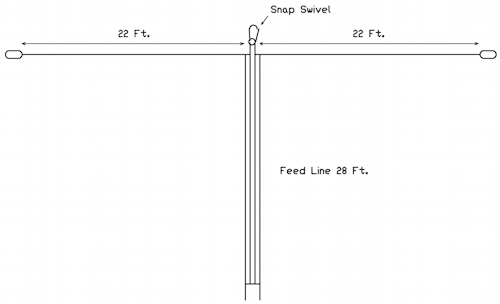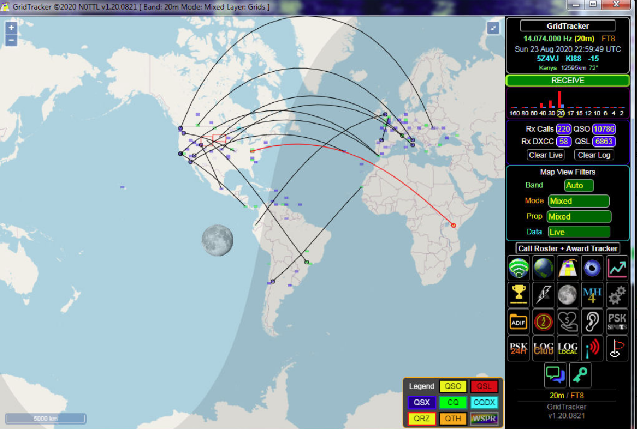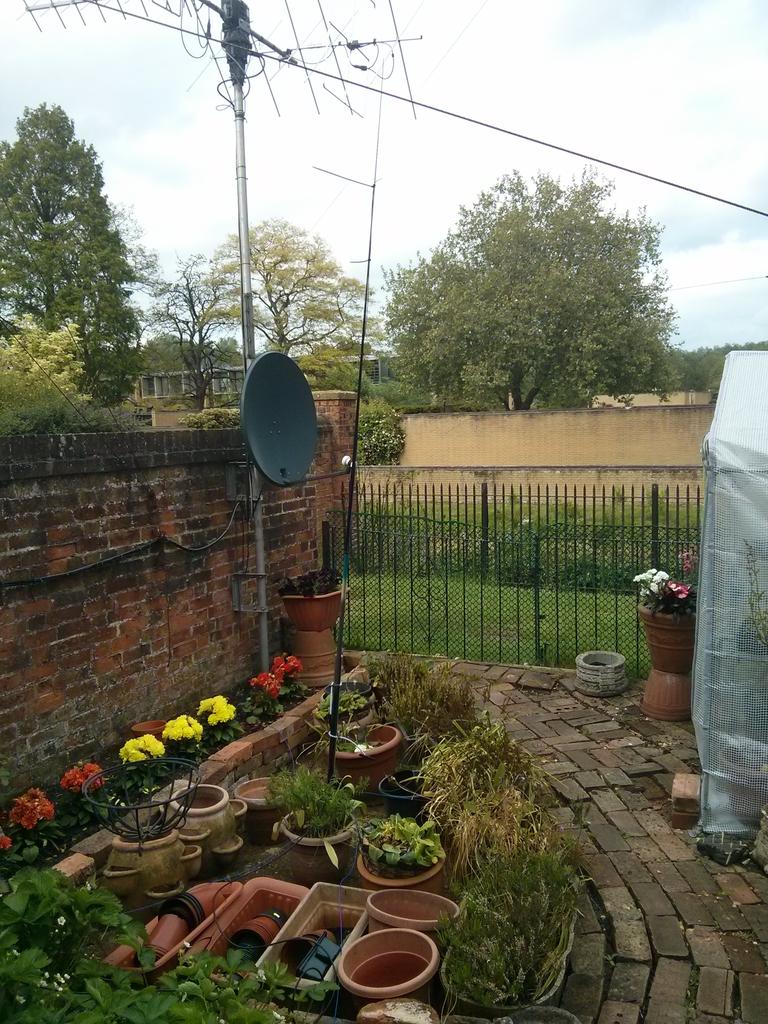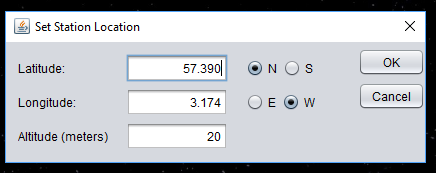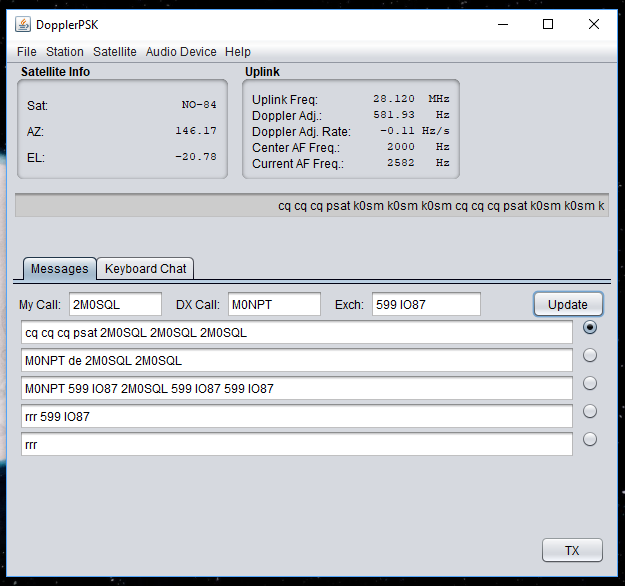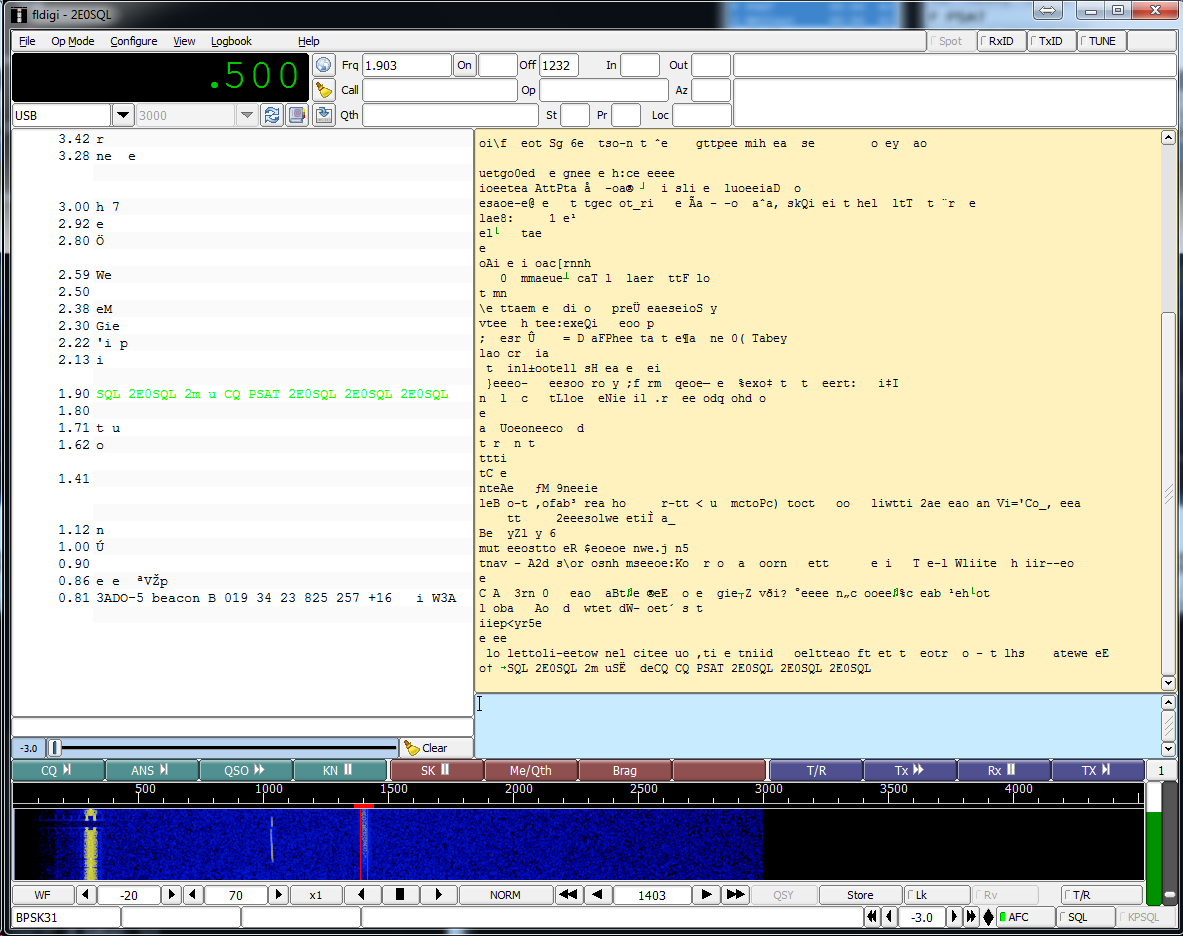Using WSPR Transmission for HF Antenna Testing
I have been playing around with the weak-signal propagation mode WSPR for about a year now. Most of my WSPR initial work was in receiving and reporting Spots from WSPR transmitters. Now I wanted to do some HF antenna testing but it was in a rough RF reception environment. So instead of receiving and reporting WSPR packets, I decided to use a WSPR Transmitter and to analyze resulting Spots reported by monitoring Stations. That allows me to see how other stations are receiving my signal, as I change or modify antennas. I think using a single transmitter on my end, and many receivers is better than the alternative for me anyway. It gives me control of the most important signal factors.
Antenna Testing with WSPR
It seems like WSPR is a natural for HF antenna testing and evaluation/comparison. I have heard some say that it is NOT a good vehicle for antenna testing because of the way HF propagation changes and varies over time. It IS true that you could not perform evaluation of a single antenna over many weeks or months without considering this variable. There are some things to keep in mind when using WSPR for testing of antennas:
- HF Propagation changes, so you must run tests over relatively short periods of time and watch for significant events (like Solar Storms) that could change signal propagation on a Band or Bands.
- Remember that you do NOT know what is on the receiving end of the link, unless you coordinate with the receiving Station. But there are many stations that are monitoring consistently with fixed antenna configurations.
- If running tests over several days, test at the same time of day or as close as possible for each run.
- For best results, find some Stations that appear to always be monitoring, and seem to be able to pickup your signals on a daily basis. There are may out there.
- If you are using a particular Receive Station and you want to make sure they are using a consistent antenna on some Band, just ask them. Most people using WSPR would be thrilled to hear that you are using their WSPR reports to improve your Station/antennas
Selecting a WSPR Transmitter
You can use most modern HF radios with WSJT-X software as your WSPR transmitter. There are some drawbacks. Many HF Transceivers only go down to 5 watts. While this is acceptable, it is overkill. Most testing on WSPR is done with 10s or hundreds of milliwatts. If you do not use GPS for timing, some other means of time synchronization will be required. For my field testing, I selected a nice portable WSPR Transmitter from Zachtek. There are many transmitters out there to choose from. The one I am using can be found here. A picture is provided below. Help is also readily available on the Zachtek forum, if you run into any trouble.

This unit uses just 5V DC which you can provide from any USB charger. It does REQUIRE GPS and an antenna is provided. GPS is used for both timing ad location calculation, so it is not optional. I have found that placing the included GPS antenna on a ground plane (mine is about 10 X 10 inches) gives me adequate signal, even inside my house with metal-backed roof insulation. The Zachtek Desktop unit can transmit on any HF Band or a combination of Bands. For my current testing, I transmit on 15, 20, and 80 meters during each 10 minute time period.
Observing WSPR reports for your Transmissions
All stations that receive WSPR packets can report their signal reports to a universal database. You can find this database online and have permanent access to all WSPR Spots ever reported. There is also an incredible WSPR front-end by VK7JJ which can be found at WSPR.ROCKS This provides an interface for extracting and sorting of WSPR Spots from the universal database. Here is a screenshot of my WSPR reports after a few hours. I was using 200 mW from the Zachtek Transmitter and the antenna was an 80 meter broadband dipole. Here is a screenshot of the map vies for my transmissions at the WSPR.Rocks Site:

Table-oriented lists are also available at WSPR.ROCKS and they can be easily imported into any spreadsheet or data analysis software.
Initial Results
When I start a WSPR session, I am always shocked at the locations where my low-power WSPR transmissions are being received. This transmitter is well designed for protection even from poorly-matched antennas. Antenna tuners are not really needed unless there is some terribly high-SWR case that is being used.
I have now found several WSPR monitoring stations that can receive my signals on a daily basis. I am just in the process of creating some test scenarios for evaluation. If you like working with HF antennas and you aren’t using WSPR, why not? It takes little of no investment if you already have HF radio equipment. If you give this a try, please let me know how it works out for you. There is much to be learned here!
73,
Tom, KG3V


